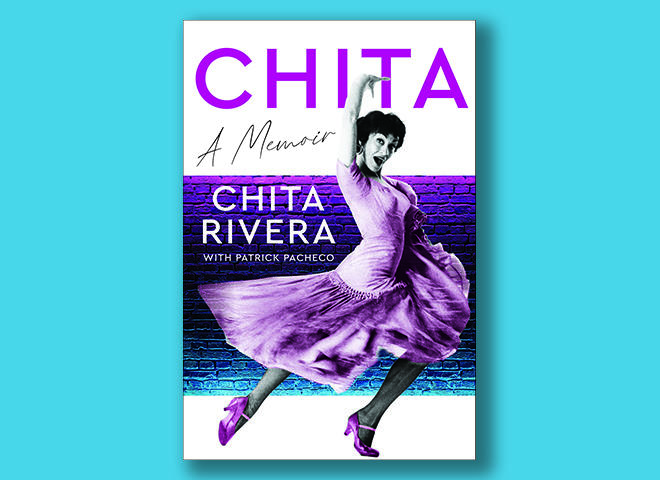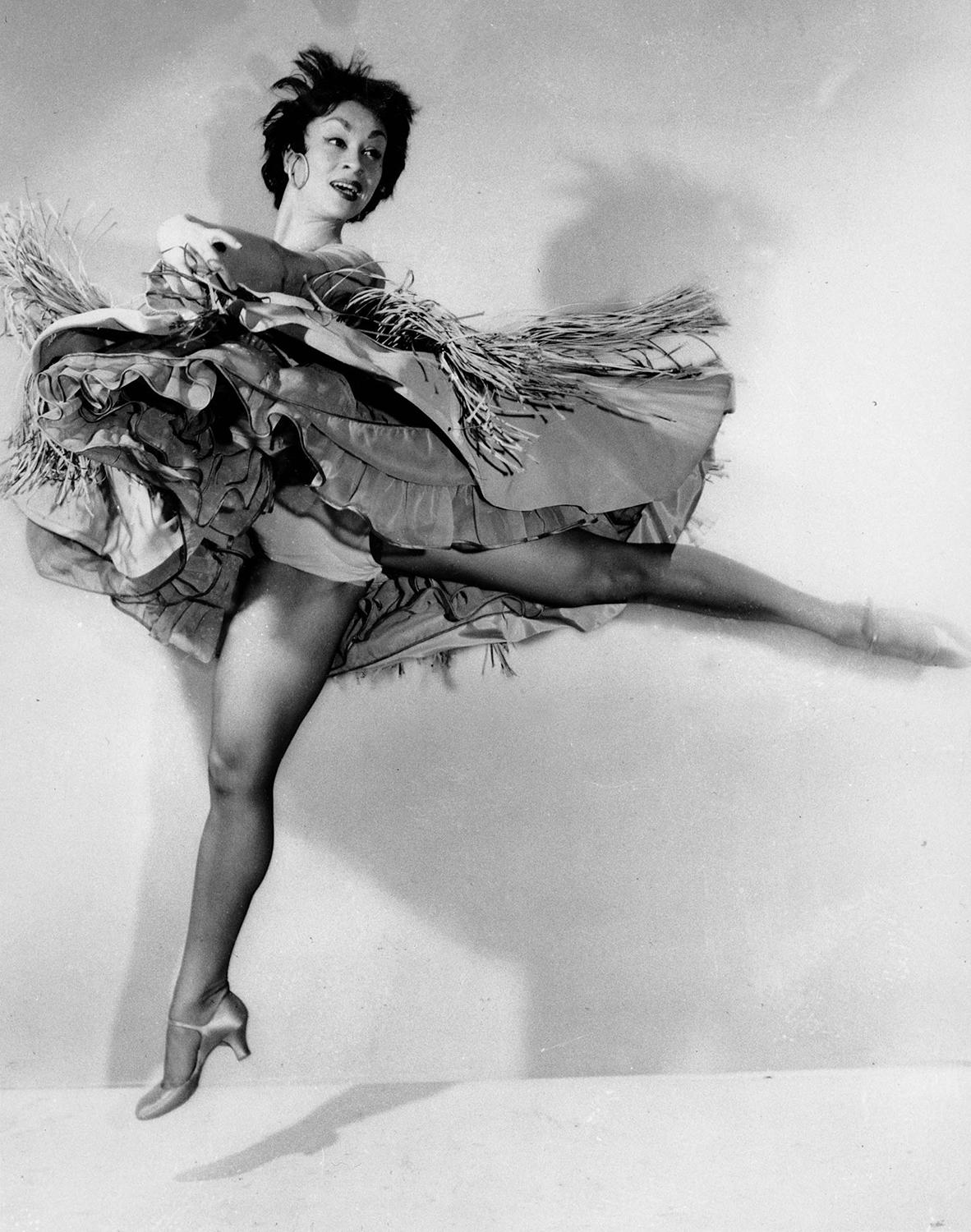Book excerpt: "Chita: A Memoir" by Chita Rivera
We may receive an affiliate commission from anything you buy from this article.
In her new autobiography written with journalist Patrick Pacheco, "Chita: A Memoir" (published April 25 by HarperOne), Tony Award-winning actress Chita Rivera writes about her remarkable life and career. Among her stories: how the costume designer of the original Broadway production of "West Side Story" helped her create the character of Anita.
Read the except below, and don't miss Mo Rocca's interview with Chita Rivers on "CBS Sunday Morning" April 23!
"Chita: A Memoir" by Chita Rivera with Patrick Pacheco
Prefer to listen? Audible has a 30-day free trial available right now.
Entr'acte
The Skirt Remembers
People often ask, "Chita, weren't you disappointed you didn't get to play Anita in the film of West Side Story?"
And I suppose I might answer "yes," except that when the movie came out in the fall of 1961, I was in a smash hit on Broadway: Bye Bye Birdie. Working on that musical, playing Rosie Alvarez opposite Dick Van Dyke's Albert, helped soothe the pain. I'd add that you really have to roll with the punches if you're going to be in this business. Helen Gallagher created the role of Nickie in Sweet Charity on the stage, but I played her in the Bob Fosse film. And yes, Janet Leigh played Rosie in the film of Bye Bye Birdie. Um, well, yeah. If you react at all, you have to laugh. I recall driving with Larry Kert past Hollywood's Grauman's Chinese Theatre, where the film of West Side Story premiered. Looking up at the marquee, Larry, who lost the film role of Tony to Richard Beymer, and I would "bawl" for a couple of seconds—and then go right back to what we were talking about.
However, when I first watched the movie of West Side Story, I have to admit that I did feel a pang of resentment. That was when Rita Moreno, as Anita, first made her appearance on the screen. I could feel Dolores welling up in me: "How dare she! That is my dress! That is my earring!"
Okay, you're probably saying to yourself, "Really, Chita? Over a dress?"
Yes. Really. Because it was so much more than just a dress. It always is. When you talk about costumes for any show, but especially West Side Story, you are talking about character. And also about genius. In this case, the genius of Irene Sharaff, who designed the dress. And the genius of Barbara Matera, who created it.
When you're standing in front of three mirrors having a fitting, you have enormous respect for the person kneeling down at your feet, invariably with pins between their lips. When they murmur this and that, you listen because you are totally in their hands and because they are smarter than you. Their discerning eye appraises you at your most vulnerable, often without a stitch on. How does the fabric flow and fall off the body? How does it drape and fill out the silhouette? What is the fusion of actor, character, and fabric so it becomes greater than the sum of its parts?
By the time I went to Irene Sharaff's workroom for the fitting for Anita, I had already been exposed to a costume designer's excellence: Marcel Vertès dressed my Fifi, the hooker in Seventh Heaven. He'd made her adorable, accessible, and very sexy; and Bob Mackintosh had made the Capri pants and blouse for my flirtatious Rita Romano in Mr. Wonderful.
But I was on my way to meet with the Irene Sharaff. By that time, she was world famous for having won her first of many Oscars for An American in Paris and for designing the luxuriant pale pink silk ball gown for Gertrude Lawrence in The King and I. She was commanding and authoritative when I walked into the studio—a handsome woman with a prominent nose and facial expressions that were made all the sharper with her favored black eyeliner. The day we met, she wore her hair in a bun and was dressed in black, over which she wore a blue smock.
Jerry Robbins knew her from the dance world, since Irene had designed his Afternoon of a Faun after having sketched out costumes for the Ballet Russe de Monte Carlo, American Ballet Theatre, and the New York City Ballet. I wondered whether Jerry had told her about our conversation regarding Anita and that the color purple had popped into my head. He didn't have to. Irene's palette was dominated by her love of reds, pinks, and oranges, in varying shades.
"I think the Sharks should be in sexy shades of cherry red, and Anita in purple," she told me as I stood in front of the mirrors. Colorful bolts of fabric were everywhere in the studio. I was a bit taken aback by her forceful presence. Irene was talking to someone who'd never thought of herself as a fashionista in any sense of the word. Before I arrived on Broadway, I had been a tomboy in everyday skirts and blouses who'd then graduated to a basic uniform of dancewear for ballet classes.
For West Side Story I had three changes: a robe in the beginning, a blouse and skirt for the drugstore scene in which I was nearly raped, and before that . . . the dress, the one I wore to the dance at the gym. You can imagine my excitement when an assistant brought it out and I put it on for the first time.
"Wow!" I said. "Did Jerry tell you I liked purple?"
"No," she quipped. "Anita did."
I peered into the mirror and looking back at me was Anita in all her pride and "don't-mess-with-me" glory. The tight bodice extended over the hips, and the skirt flared out to an edge of three rows of mini-ruffles masking the skirt seam. The underskirt had a pleated ruffle, and the net petticoat had red piping at the edge of the hem. I felt like a million bucks. The costume flattered my assets and diminished my flaws. The dress felt like a second skin. I loved every square inch of the fabric.
I twirled, flipping the skirt around, the rhythms of Lenny's mambo dancing in my brain.
"Be careful, Chita," said Irene. "Don't waste it. Don't be shaking that thing all the time. Tease out the colors. Wait for the right moment in the show. When you flip that skirt, the audience should see a world, an emotion, a taunt."
I understood what she was talking about. My impulse was to throw it all out there right away: "See how fierce I look!" But Irene was, quite subtly, teaching me how to wear a dress for a maximum effect—an extremely valuable lesson that would continue to be useful throughout the rest of my career. What it came down to was this: Chita, never forget that the dress is a living thing with its own demands and personality.
Irene asked me to do some dance steps, intimate and small at first, then grand and flashy. She wanted to make sure that the dress would follow each move in just the right way, a choreography of body, fabric, and silhouette. Then an assistant brought out two hoop earrings. I placed them through the pierced openings in my ears. Irene eyed them critically from every angle.
As she walked around me, I boldly suggested, "What if I take one of them off?"
Irene paused for a moment. "Why?"
"Anita's kind of a pirate, don't you think?"
"Which one?" she asked.
"The left one," I said, taking it off. We both looked into the mirror. She smiled.
"There, that's Anita!" she said.
Excerpted from "Chita: A Memoir" by Chita Rivera. Copyright © 2023 by Chita Rivera. Excerpted with permission by HarperCollins.
Get the book here:
"Chita: A Memoir" by Chita Rivera with Patrick Pacheco
Buy locally from Indiebound
For more info:
- "Chita: A Memoir" by Chita Rivera with Patrick Pacheco (HarperOne), in Hardcover, eBook and Audio formats, available April 25 via Amazon, Barnes & Noble and Indiebound
- Follow Chita Rivera on Twitter, Facebook and Instagram





